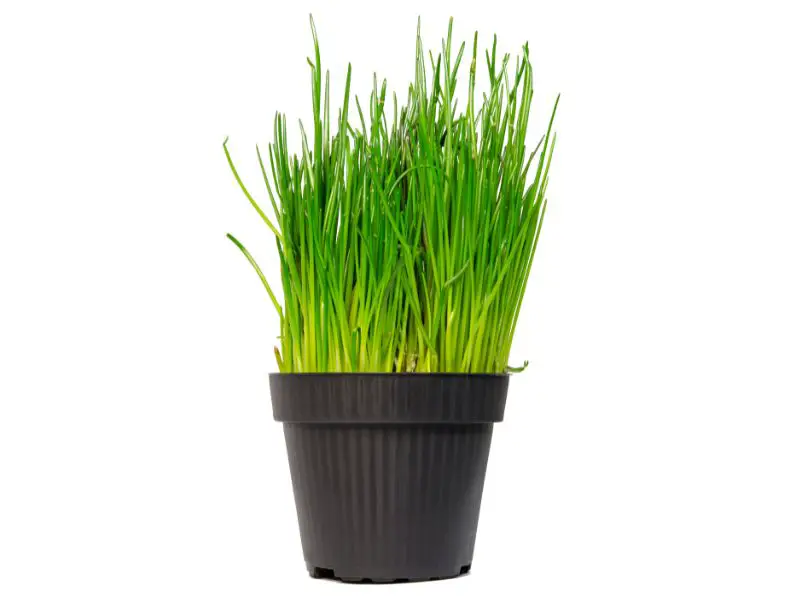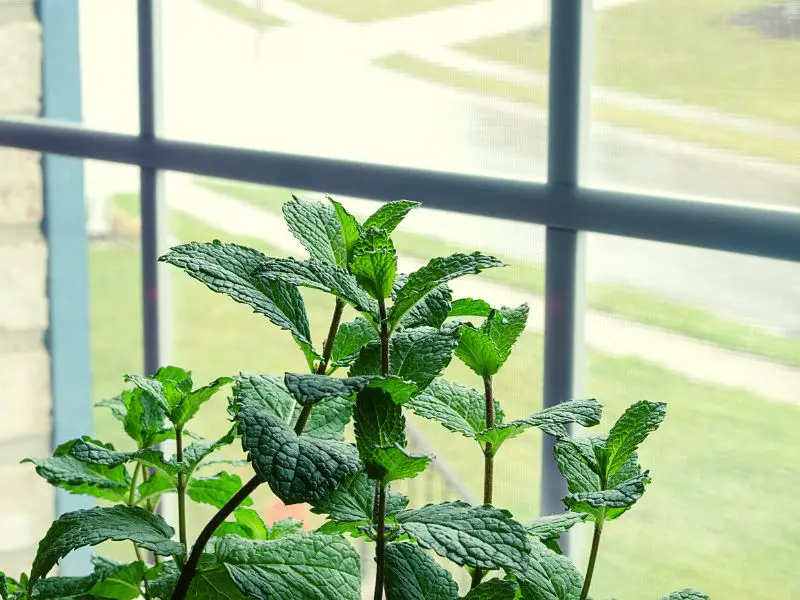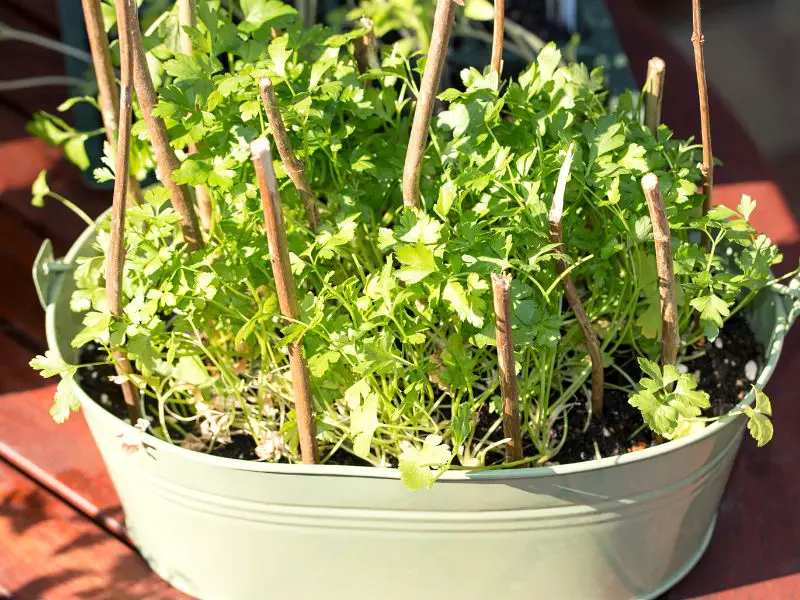I enjoy planting herbs in my garden, but most of them die back throughout the winter. Given how frequently I use herbs in cooking, here’s a quick solution I found: Grow herbs indoors!
Even if you’ve never planted anything before but dream of plucking fresh vegetables from your kitchen window sill, a tiny plot of herbs is a great place to start. It’s low-cost and low-risk: all you need are a few pots to grow in, a bag of soil, and a sunny window to get started. Herbs are also known for being compact, quick to grow, and beneficial, making them an excellent start to your gardening journey.
Today, we will walk you on how to grow herbs indoors and provide you with the basics of growing herbs in general, including pros and cons of seeds vs seedlings, plus my top herb picks. Let’s go!
Why Grow Herbs Indoors?
What matters to foods the most is how it tastes! Fresh herbs enhance the flavor of foods tremendously. I used fresh herbs in various dishes, including herb butter, pesto sauces, calming teas, and even skincare items, so having a plentiful supply is a blessing all year. Herbs are also well known for their ability to improve the health of people and animals. They’re great for natural remedies and just as tasty in cooking as in drinks.

Herbs are used in complementary therapy, making them a versatile and practical treatment option. Growing herbs indoors is a cool way to experiment with culinary herb gardening. When you grow herbs indoors, you’ll be able to control the space and the amount you grow. You can change your mind about what kind of growing environment you want from season to season or month to month, which will make it easier for you to experiment with different herbs in your garden and determine what works best for you and your family’s needs.
Basic Stuffs You’ll Need
- Determine how many herbs you’d like to cultivate (I recommend starting with a minimum of 2-3) and purchase a pot for each of them. The most important thing to remember is the size of the pot: Ensure that the container you use is at least two inches wider than the seedling you intend to plant in it. If you’re growing with seedlings, you want the pot to be about six inches wider.
- Dishes – Since you’ll want to avoid water streaks down your window sill, make sure to place dishes under those cute pots.
- Seed tray, old ice cube tray, or something to hold the seeds. Your creativity is the only limitation here.
- Soil plus a few pebbles or gravels
- Seeds or seedlings(baby plants that are a couple of inches tall)
Growing and Nurturing Indoor Herbs: Beyond the Basics
Choosing the Right Herbs: Oregano and its Cousins
When you decide to grow herbs indoors, oregano is a favorable choice. This versatile herb is much more adaptable indoors compared to some of its peers. Unlike rosemary, which can be quite fussy about humidity, oregano is more forgiving. However, it can still benefit from a dash of added humidity.
To ensure its prosperity, place it in a bright, sunny location inside and maintain regular watering. While exploring indoor herbs, Marjoram deserves mention. Often mistaken for oregano, Marjoram offers a sweet and floral taste, becoming an excellent addition to soups, stews, and meat dishes.
The Importance of a Proper Environment
For many who choose to grow herbs indoors, a sunny windowsill is the prime location. It provides these green gems with the much-needed light, vital for their growth. Position them near a bright, south-facing window during the winter months for maximum light exposure. Such windows bask in the most light and offer extended sunlight hours, crucial during shorter days. However, come summer, the sun’s intensity through these windows might be a bit too much. Hence, an east or west-facing window becomes a preferable choice, offering balanced sunlight during mornings or afternoons.
Planting Considerations: Drainage, Moisture, and Pots
Proper drainage is of utmost importance when you grow herbs indoors. Select pots with drainage holes, ensuring that excess water can escape, thereby preventing the dreaded root rot. While moisture is essential for herbs, moderation is key. Water slowly, permitting the soil to soak up the moisture, while allowing the excess to drain through the bottom holes. Always use a saucer or tray beneath your pots, ensuring your windowsills or surfaces remain moisture-free.
From Seeds to Thriving Plants
Starting your journey to grow herbs indoors from seeds can be quite fulfilling. While this method takes longer than transplanting pre-grown specimens, the gratification it provides is unparalleled. For those looking for a quicker start, garden centers are invaluable. You can find a plethora of young plants, including some of your favorite herbs, all set for a new home.
Feeding Your Indoor Herbs
Herbs grown indoors don’t have the luxury of sourcing nutrients from the vast outdoor garden soil. Thus, a little assistance from fertilizers is necessary. But, a word of caution – when it comes to fertilizers, less is more. Understand the diverse needs of your indoor herbs – their preferred sunlight, water, fertilization techniques, and harvesting methods.
Bright Light and Its Role
Light is pivotal when you grow herbs indoors. Many herbs, such as basil and dill, are quite partial to bright light. However, some, like chervil, chives, parsley, and mint family members like lemon balm, are more lenient, managing well in subdued light. Whether you’re buying a new plant or propagating from cuttings, ensure they receive the required light for optimal growth.
As you venture to grow herbs indoors, understanding their unique requirements can make the process not just simpler, but also deeply rewarding. With the right conditions in place, your indoor herb garden can be a consistent source of fresh flavors, adding a green, refreshing touch to your living space.
Pros and Cons of Seeds and Seedlings
Seeds
Advantages: Growing seeds feels very gratifying. From the moment you sow the seeds to the moment you pick them from the pot… it’s all fun. Starting from seeds also gives you wider varieties to grow. Also, it’s cheaper since you can grow with packets of seeds instead of buying the entire plant.
Disadvantages: You can only take care of one plant at a time. Also, it’s challenging to germinate seeds unless they’re adequately germinated, and even then, they can be slow to grow.
Herbs to Try: I recommend parsley, dill, basil, and mint. These are the herbs you can grow in four-inch pots indoors. They are easy to direct, not difficult to germinate, and fun to grow.
Seedlings
Advantages: Very easy to grow, fastest, and easiest to germinate. All you need to do is stick the seeds on the soil’s surface and let them germinate. As for light, you can use a sunny location, but at least 18 hours of sunlight is preferred.
Disadvantages: There is only one plant per pot, thus limiting your options. They can be more costly because you might have to buy multiple bigger trays depending on how many you want.
Herbs to Try: There are lots of options here. Buying seedlings is an excellent option with herbs that are difficult to start from seed or take longer to sprout and grow (such as woody herbs such as rosemary or thyme) because the hard work of sprouting them has already been done.
How to Plant Herbs?
Many herbs grow tall and wide, and while they do best in the ground, there are numerous that thrive in containers under the right conditions.

What is the first order of business? Fill the pots halfway with gravel. And then:
For seeds
Load the pot with soil, leaving approximately an inch of the pot’s lip uncovered. Plant the seeds accordingly with the seed packaging. For the most portion, this will include forming several small holes in the soil with your finger, putting a few seeds into each, and then filling the divots up with a thin coating of soil.
Many people start their seeds in a seed starting tray, creating spaces and then sowing them accordingly with the seed package. Coral Lee, an associate editor, suggests reusing anything from an ice cube tray to an egg carton or a brownie pan for your seeds.
For Indoor Gardening
For those aiming to grow herbs indoors, Lee (who, let’s say, is a “pro,” at it) suggests filling each carton or tray with approximately a tablespoon of soil, putting two to three seeds into each cup, and covering them gently. “Make sure it’s moist—and not overly soggy!—when the seeds germinate, then it’s time to transplant them into your pots.
Move seedlings into pots or bins with care and ensure that the soil securely anchors them before transplanting them to a permanent location,” she explains.
For Seedlings
Extract the seedling from its plastic pot and use your fingers to stimulate the roots gently. (This helps awaken the roots and help them adjust to the new container.) If your pot is larger than the plastic container your seedlings come in, fill it with soil but leave space on the top. Create a trench slightly larger than the transplant, place the seedling in the pot, and carefully pat the soil around the roots. Then spread a thin layer of soil surrounding the plant.
Don’t squish the soil down too much! (Otherwise, air cannot pass through.) Water your newly potted plants thoroughly (the soil should feel wet but not muddy or drenched), and then set them in a sunny spot where they will receive plenty of sunlight. Most herbs require direct sunlight and well-drained soil to thrive well, but if your home does not have a sunny window, they will most likely need LED grow lights to thrive.
Best Herbs to Grow Indoors
1. Basil
Basil thrives in full light and warm temperatures, so plant it in the sunniest area possible in your herb garden, preferably at 75 degrees.
Basil is well-known for its role in preparing pesto sauce. It goes well with various tomato-based recipes, veggies, and cheeses.

2. Chives
Chives are a perennial herb that falls under the onion family and is used in various dishes.
This indoor herb can grow in clumps of hollow stems that should be separated every three years to ensure a continuous supply of chives.
Chives are best enjoyed when they are still fresh so that you can appreciate their crisp texture. Their adaptability makes them a perfect addition to soups, omelets, soft cheeses, and topping for baked potato dishes.

3. Mint
Mint is a beautiful herb to cultivate in the home. Mint spreads swiftly, so you should always keep it in a separate pot to avoid other herbs competing for space.
Spearmint is the most frequently used herb in the kitchen for cooking. It has a refreshing minty flavor. Peppermint and Chocolate Mint are two more popular varieties of mint that can be grown indoors as herbs.

4. Parsley
Parsley is yet another great herb that can be grown indoors and it should be planted in a larger container than most plants because it has a long taproot.
Parsley is a popular herb in many cuisines because of its crisp and refreshing flavor. I usually use the leaves in some dishes. You may also keep the stems and use them to spice soups and broths later.

5. Rosemary
Rosemary has a rich, pleasant flavor with evergreen overtones that complement other herbs. It is a highly aromatic herb that makes an excellent addition to the culinary herb garden.
Rosemary is a perfect herb to use when roasting vegetables. It goes well with both vegetables and meats. In most recipes, I coarsely chopped the leaves before adding this fine ingredient. Some also put the whole sprigs to enhance the flavor before being removed right before serving.

Frequently Asked Questions (FAQs)
Author’s Note
Now that you know how to grow your herbs best, it’s time to plant! You will want to select the herb with care and make sure your home provides the necessary conditions before you get started.
Remember: Patience is key.
With these tips and a little hard work, you’ll have a thriving indoor herb garden in no time! Also, check out these tips about what you can make from plants. This is another way we can protect the environment. Thank you for reading, and remember, sharing is caring!



;?>/smartquizbuilder/includes/images/sqb-registration-img.jpg)




6 thoughts on “The Best Way to Grow Herbs Indoors: What, How, and Why To Plant Herbs”